The LHC made simple
If you knew nothing, Jon Snow, here’s what it’s doing in five simple steps.
“Let them see that their words can cut you and you’ll never be free of the mockery. If they want to give you a name, take it, make it your own. Then they can’t hurt you with it anymore.” –George R.R. Martin
When it comes to uncovering what the Universe itself is made of, at a fundamental level, you might think the way to go about it is to take matter like us and break us up into ever smaller and smaller pieces. But when you do that to things like you, me, and everything we find here on Earth, you find that there are very small constituents of matter inside: all matter is made of molecules, which are in turn made of atoms, which can be broken into nuclei and electrons, and then quarks and gluons make up the nuclei.
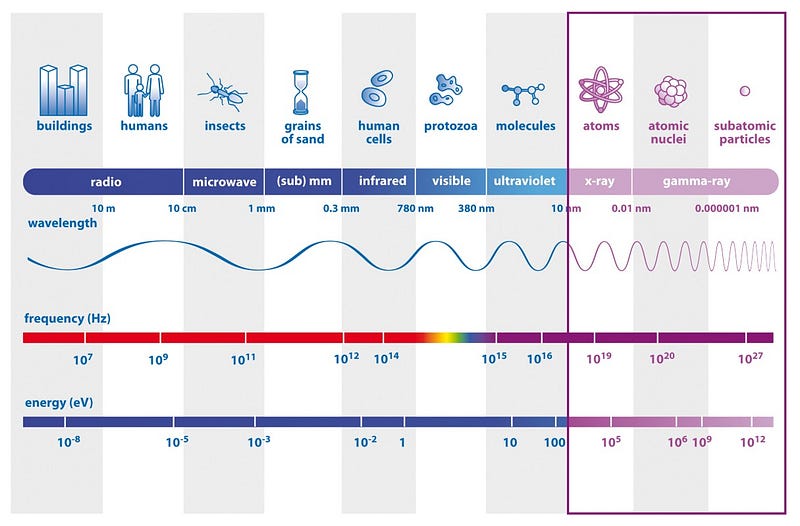
But there are other fundamental particles out there that aren’t necessarily found inside the things that make us up. Thankfully, we’ve got a convenient way to make absolutely anything that it’s possible for the Universe to make: by taking advantage of Einstein’s E = mc^2. Get enough energy together in one location in space-and-time, and you can make literally anything that the Universe allows.
This is exactly what particle accelerators and colliders like the Large Hadron Collider (LHC) have been doing for nearly a century. Having just restarted, the LHC is poised to take our understanding of what’s possible in this Universe to unprecedented heights. Here’s how the magic happens, in five easy steps.
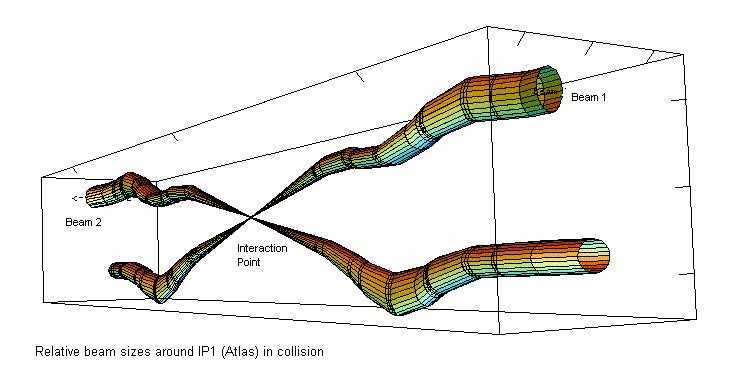
1.) It’s all about Energy. The “E” in that famous equation, E = mc^2, is what it’s all about. The more energy you have available, the more massive the particles you can create. (Since c, the speed of light, is a constant, the larger the E you have means the larger the m you can make.) So rather than cleave individual particles apart into tinier and tinier entities, the goal is to create an event — or a single interaction point — that contains as much energy as possible.
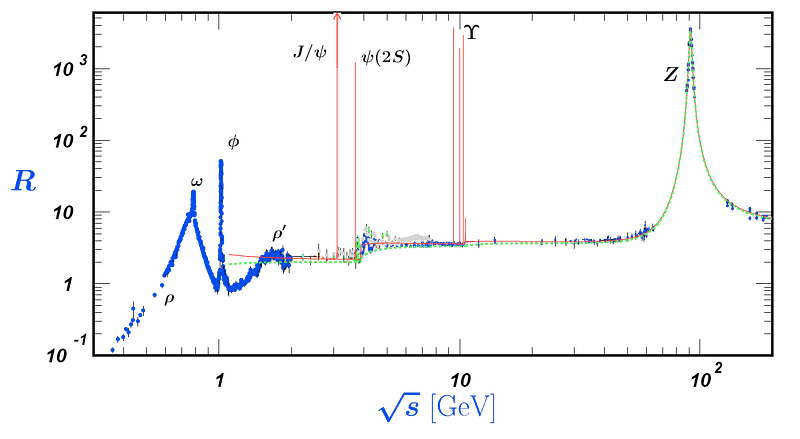
You do that, and the particles you can (and will) make will be limited only by the amount of energy you have available to create them. So you want to reach the highest possible energies in a single interaction point; that’s the goal. How does the LHC get us there?
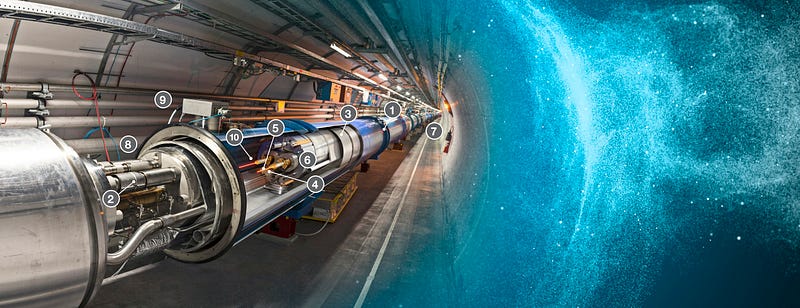
2.) You take two massive particles and accelerate them to the highest energies possible. This means you need the fundamental particles to have those high energies: either the electrons (if you’re using electrons) or the quarks-and-gluons inside a proton. When we talk about an “event” having a certain energy, we’re talking about the amount of energy that becomes available for creating new particles from the interaction of two fundamental particles.
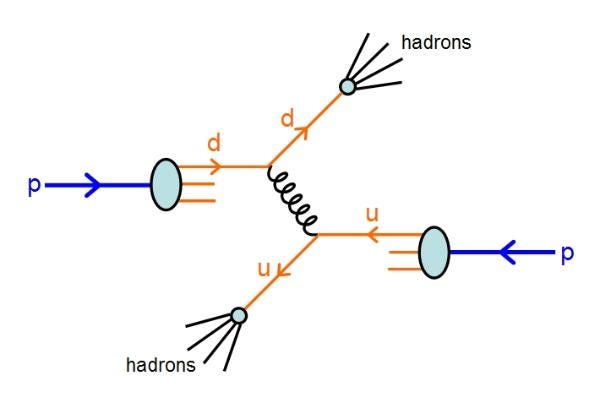
Inside the LHC, the way you achieve those energies is by taking two charged particles — two protons — and accelerating them as close to the speed-of-light as you can. You send one clockwise and one counterclockwise, and smack them together to get the maximum amount of energy out. If you want to get a charged particle close to the speed of light, there are really only three things you need to consider:
- How large your ring is that your particles travel in? (Bigger is better.)
- How strong is your magnetic field that accelerates and bends the charged particles? (Stronger is better.)
- And how fast can these particles go before the magnetic field causes them to emit radiation faster than you can accelerate them? (A property of the particle’s mass, coupled with the ring’s magnetic field and radius.)
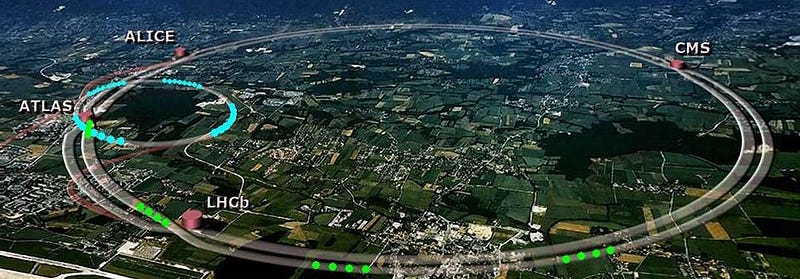
The LHC is the largest ring ever used for a particle accelerator at about 27 kilometers in circumference, and has the strongest electromagnets ever used in an accelerator. Even though protons are composite particles, meaning that the energy is split between three quarks and an indeterminate number of gluons (and “sea quarks”), their heavier mass means that it can reach much, much higher energies than, say, an electron can (at just 1/1836th the mass of a proton) before it emits this limiting radiation.
In the case of LEP, which was the Large Electron-Positron collider that preceded the LHC, it reached an energy of about 114 GeV, where a GeV is a giga-electron-Volt (10^9 eV). Fermilab, the previous energy-record holder, operated with proton/anti-proton collisions at 2 TeV (tera-electron-Volts, or 10^12 eV), while the LHC in its first run reached proton-proton collisions at 7 TeV and now, in its new run, will break the energy record at 13 TeV.
But energy won’t get you everything!
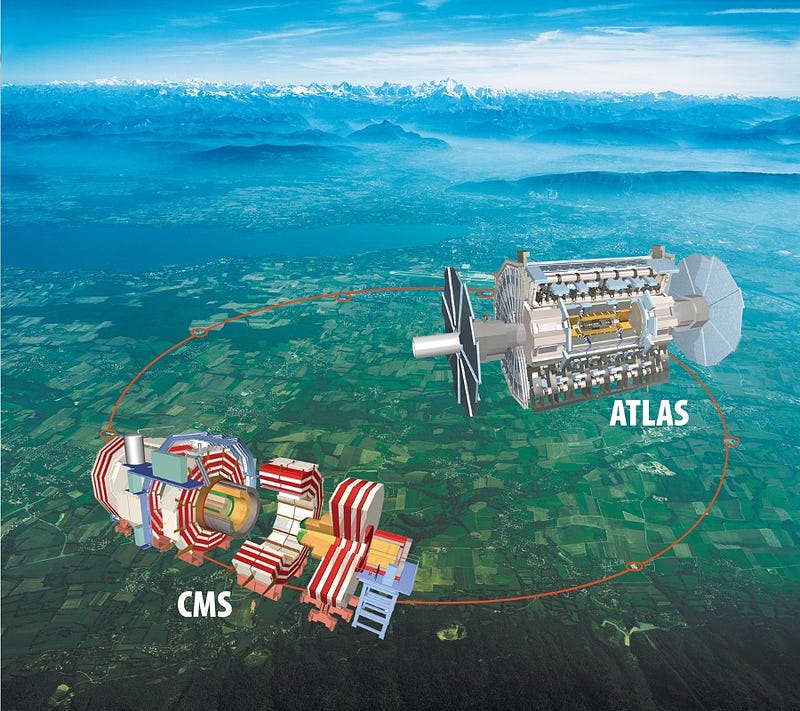
3.) You have to detect everything that comes out of the collision to accurately reconstruct what it was that you created. Most of the particles we shoot at each other miss, since protons are so incredibly small at just 10^-15 meters in diameter. But when they do collide, the results are incredibly messy!
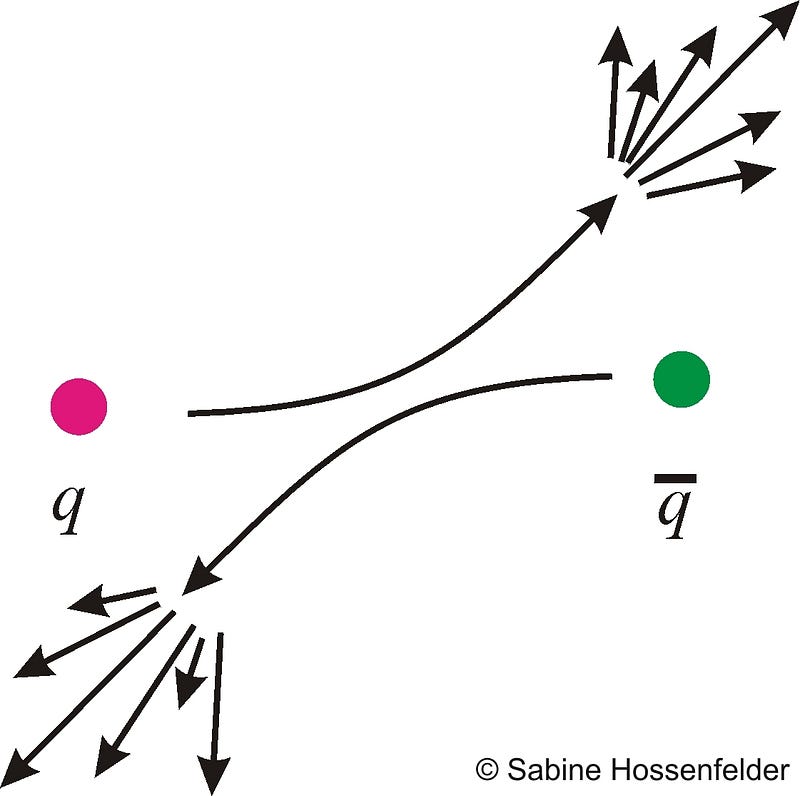
Quarks go everywhere, resulting in high-energy jets of particles, new particles are created, and almost everything “novel” you do create decays away in a tiny, tiny fraction of a second.
Your only hope for piecing it back together? Detect everything that comes out — its charge, its energy, its momentum, its mass, etc. — and try to reconstruct what you created back at the collision point.
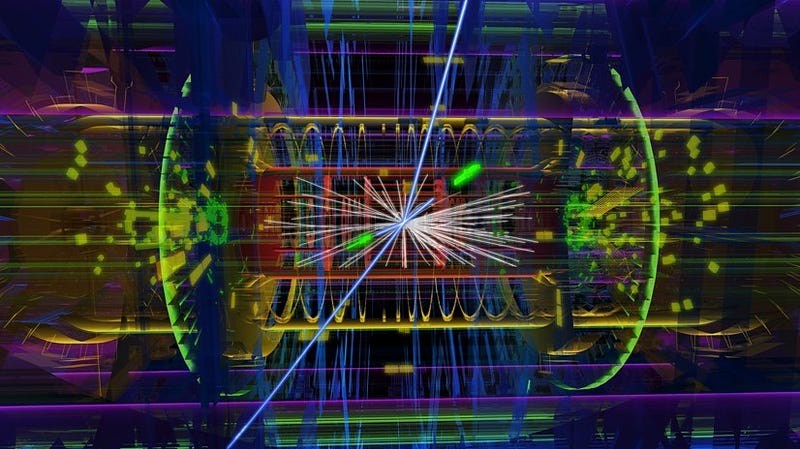
This is an incredible task for technology, requiring detectors the size of a dozen school buses all tied together, all to piece together something that started off less than the size of a proton! It’s also a tremendous task for data, since these collisions are so frequent that we can only write down the data for about one-in-a-million collisions, meaning that we’re throwing away 99.9999% of the data we’re creating. (Don’t worry; we have criteria for making sure we’re throwing away the data for “known” stuff, and saving the data for possibly novel stuff.)
So we build these giant machines, create the collisions, write down the data, and then we analyze it. What are we looking for?
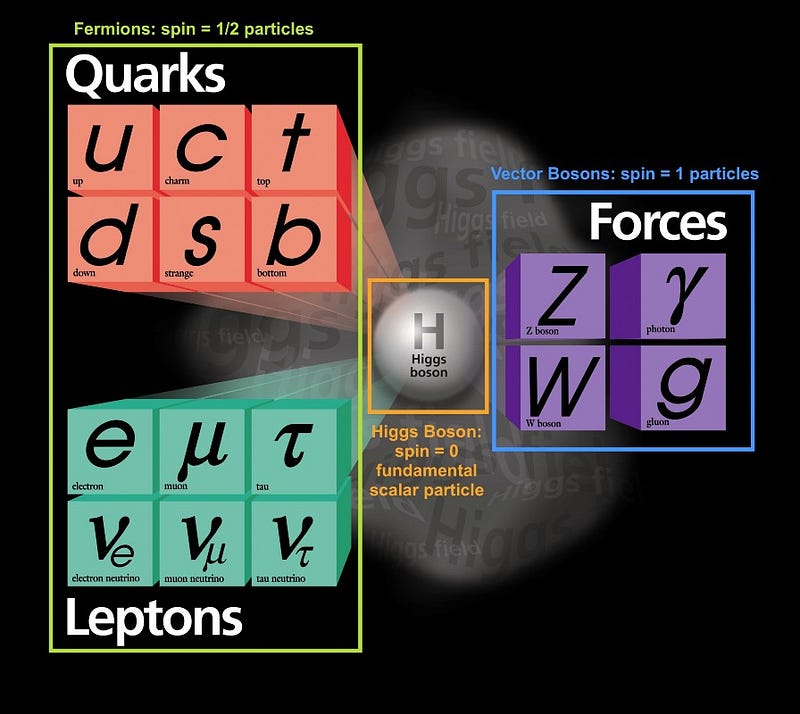
4.) Compare the full suite of data with what we expect the Universe to give us. Above is the Standard Model of elementary particles. Every one of these particles has now been experimentally discovered, having been directly detected by some means or method. The last holdout, the Higgs boson, was discovered by the first run of the LHC in 2012.
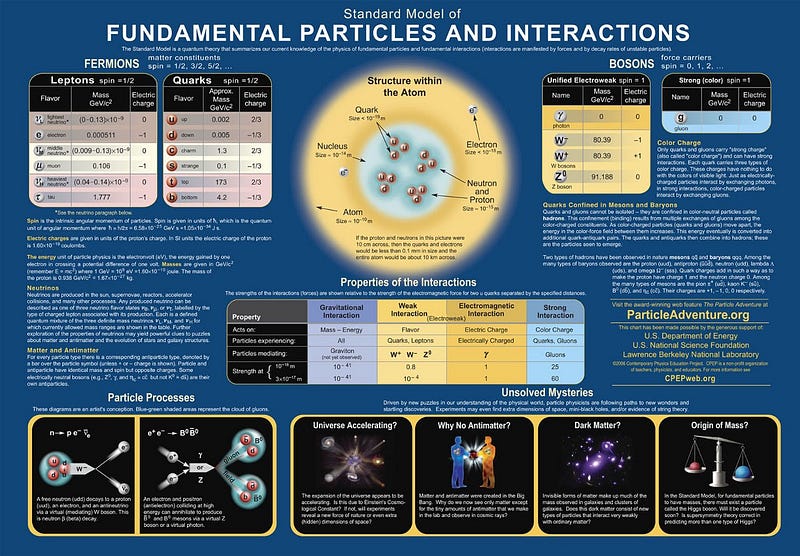
The thing is, every single one of these particles is — based on the electromagnetic, weak and strong interactions — supposed to interact with all other particles (and decay) in specific, known ways. The Standard Model is very explicit in these predictions, so when we measure these properties, we’re testing our most fundamental laws of nature itself. Right now, the theory of the Standard Model has agreed perfectly (i.e., within the experimental limits) with all of our observations.
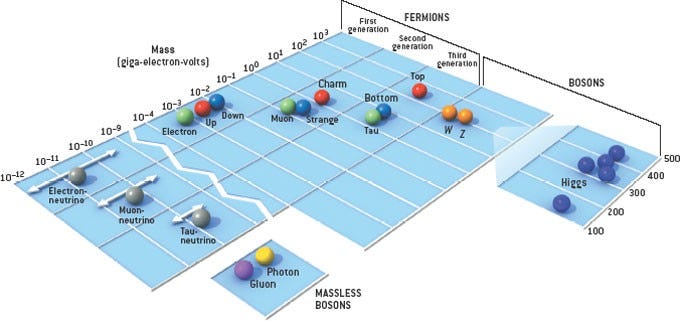
But there are puzzles out there that physics presently cannot explain, including:
- Why do neutrinos have small but non-zero masses?
- Why do we see CP-violation in the weak but not strong interactions?
- Why do the particles all have masses so much less than the Planck mass?
- And why is there more matter than antimatter in the Universe?
The answers to these questions may remain secrets for some time, and for many orders of magnitude in energy. But the LHC may also uncover them! Which brings up the final-and-most exciting point…
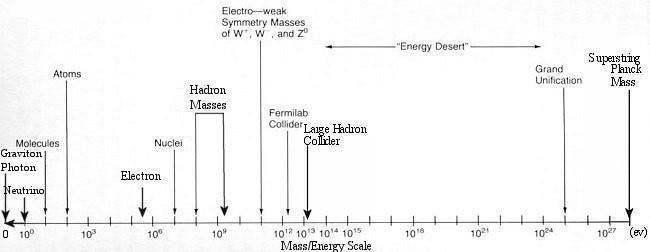
5.) The LHC is probing uncharted territory in looking for new, fundamental pieces to our picture of the Universe. If dark matter exists with a rest mass of below about 1 TeV, the LHC should see a surefire signal of it. If supersymmetry (SUSY) is the reason why particles have masses so much less than the Planck scale, we should find at least one SUSY particle at the LHC. If there’s more than one Higgs particle, the LHC should find at least one of the others. And if the key to the matter/antimatter asymmetry lies in electroweak physics, the LHC should start to see that.
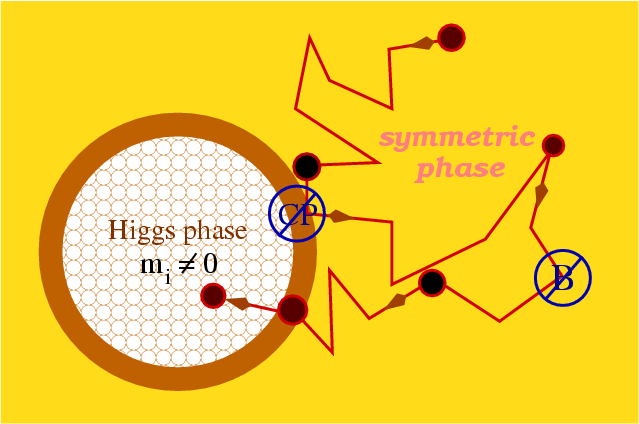
Basically, if there are new particles or interactions that play a role up to energy scales of about 1 or 2 TeV, we’ll see deviations or additions to what the Standard Model predicts in the data that the LHC will collect over the next three years.
And even if there aren’t new particles or interactions, the LHC will confirm the Standard Model and nothing else up to energy scales that, shall we say, makes physics even more interesting and puzzling than we’ve hitherto imagined. We may even find new states of matter that the Standard Model predicts but hasn’t yet been observed, like glueballs, or bound states of gluons alone.
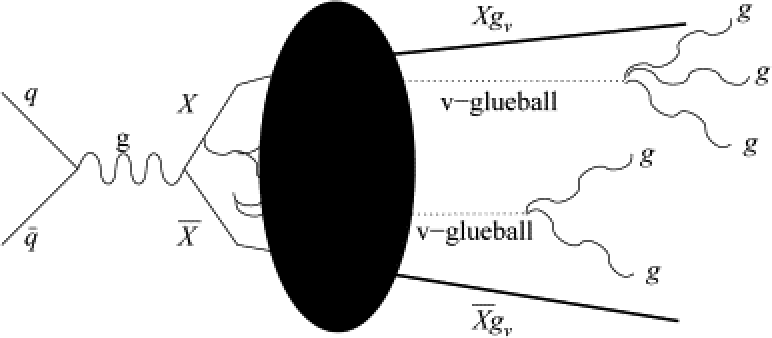
There’s nothing a physicist likes better than a Universe that doesn’t quite make sense as we know it, because that gives us a fascinating and tantalizing puzzle to solve!
So that’s what the LHC is doing, how it’s doing it, what it’s looking for, and why. And if that doesn’t excite you? Well, you can always turn to the BBC.
Leave your comments at the Starts With A Bang forum on Scienceblogs.





